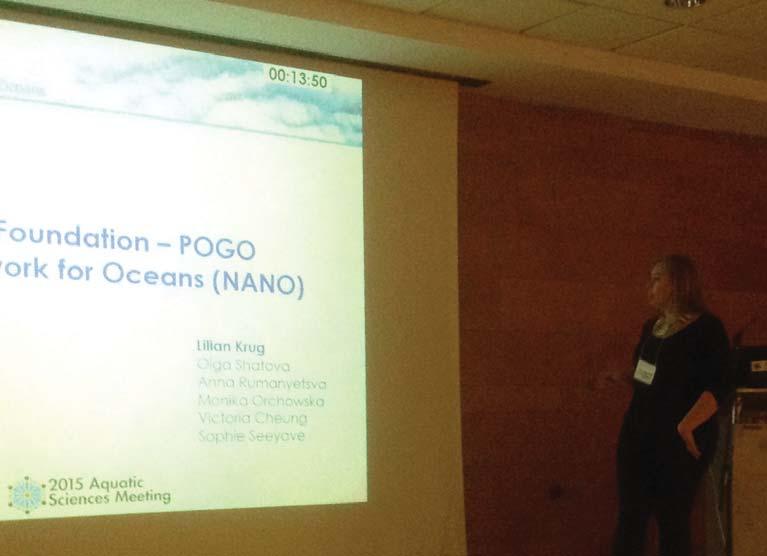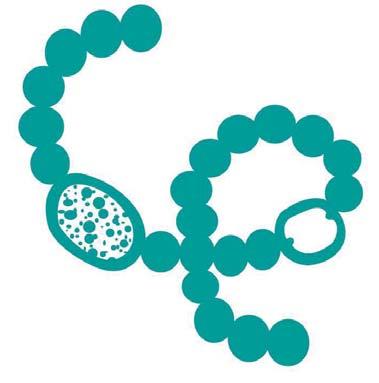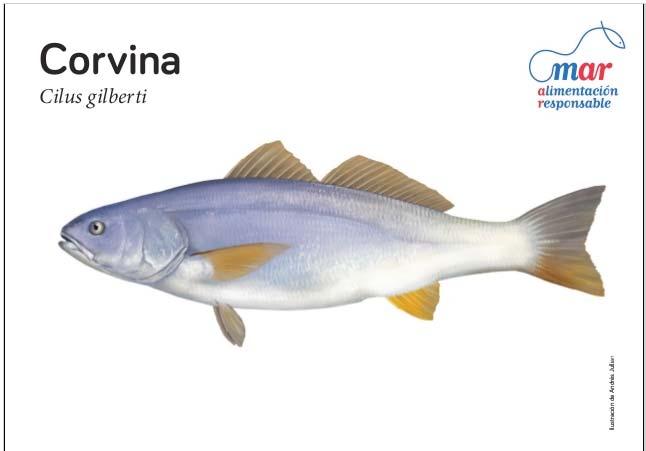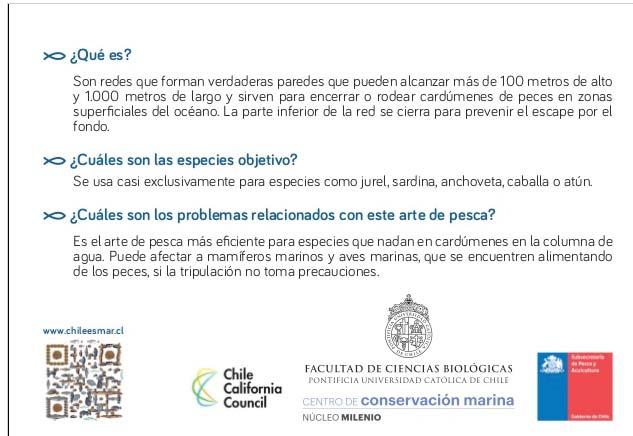
10 minute read
The EducaƟ on and Outreach session at the ASLO MeeƟ ng 2015
from NANO News 9
by NANO
NANO Organizer Centre for Marine and Environmental Sciences, University of Algarve, Portugal Wikipage: hƩ p://www.nf-pogo-alumni.org/~Lilian+Krug
In February this year, 2500 students and researchers from 64 countries met in Granada, Spain for the ASLO (AssociaƟ on for the Sciences of Limnology and Oceanography) AquaƟ c Sciences MeeƟ ng: Global and Regional PerspecƟ ves – North Meets South. During one week, parƟ cipants discussed a variety of subjects related to recent freshwater and ocean sciences achievements. Several members of the NANO network aƩ ended the meeƟ ng presenƟ ng results of their research work. NANO itself parƟ cipated in a very special session, the session 133: AquaƟ c Science EducaƟ on and Outreach – Expanding InternaƟ onal Science Literacy. In the NANO presentaƟ on we introduced the alumni network history, its members´ commitment to it and the results of our acƟ viƟ es, especially those from the Outreach component. The secƟ on included 21 oral presentaƟ ons and 4 posters delivered by representaƟ ves of universiƟ es, networks and groups of graduate students. It was great to see diff erent examples of acƟ viƟ es being implemented on the improvement of aquaƟ c science literacy around the world. In this arƟ cle I would like to menƟ on a few successful examples presented at the session. Some of these iniƟ aƟ ves I believe are not too demanding to execute and I hope this may bring inspiraƟ on to our alumni to conduct their own outreach acƟ viƟ es. This arƟ cle was wriƩ en based on my notes from the session and addiƟ onal informaƟ on obtained on abstracts and websites. Although I put my best eff ort into wriƟ ng everything down during the MeeƟ ng, I would like to apologize if any relevant informaƟ on has been overlooked. I have included links for the acƟ viƟ es summarized here and direct readers to them for more informa Ɵ on and contact details.
Advertisement

Lilian Krug presenƟ ng NANO and its Outreach component at the ASLO MeeƟ ng
Digital Explorer




Dr C. Lewis from the University of Exeter (UK) presented the Digital Explorer Programme (hƩ p://digitalexplorer.com/) that aims to bringing science to the classroom in the UK. The programme supports school teachers by using marine sciences ganizers encourage the use of tools that brings science to life, like photos, videos and computaƟ onal resources in classroom demonstraƟ ons. One of the examples menƟ oned by Dr Lewis was the use of Google Earth’s street view on coral reefs (hƩ - ps://www.google.com/maps/views/streetview/oceans?gl=us). Kids were introduced to the device and leŌ to explore it. Examples that they encountered were used later to explain ecosystem components. Digital Explorer has training courses for school teachers who then become programme ambassadors and deliver cascade training to their own colleagues. At the Ɵ me of the MeeƟ ng, they had applied it to almost 40 schools in the UK and it was proving to be very successful.
ScienceToGo
examples and case studies to cover core science topics. The or




The partnership ScienceToGo (www.sciencetogo.org) presented a creaƟ ve example to raise climate change awareness among the general public in Boston (USA). They ‘adverƟ se’ it through posters and placards on subway platforms and trains, where more than 400000 people commute every day. A light humorous message is delivered by the character Ozzie, an ostrich who along with his friends takes a journey to “raise his head out of the sand” to become a climate leader. In addiƟon to the adverƟ sements on the trains, there are a website, a selfi e app, cutout ostrich signs placed around the town, social media (Facebook and TwiƩ er) and other ways to engage, educate, and entertain people in the city.



The InsƟ tute for Systems Biology (USA) presented an acƟ vity called Ocean Acidifi caƟ on: A Systems Approach to a Global Problem (hƩ p://baliga. systemsbiology.net/drupal/education/?q=content/ocean-acidificationsystems-approach-global-problem). This 5 week-secondary school acƟ vity teaches criƟ cal systems thinking through ocean acidifi caƟ on research with hands-on, interdisciplinary, standards-based lessons. In the course, students take diff erent roles as scienƟ sts and invesƟgate the consequences of changing carbon cycle on the oceans. They criƟ cally assess data, create a network diagram, align themselves with stakeholders and design collaboraƟ ve experiments to test hypotheses and network properƟ es. They discuss fi ndings, systems consequences, and make recommendaƟ ons for further research, policy-making, and lifestyle changes. Dr C. Ludwig said that aŌ er accomplishing the acƟ vity; students show a higher level of engagement, increase in science literacy and scienƟfi c inquiry.
ScienƟfi c Research and EducaƟon Network


A group of graduates in North Carolina (USA) created the ScienƟfi c Research and EducaƟ on Network (SciREN - hƩ p://www. thesciren.org/) The aim of the network is to connect the science, technology, educaƟ on and math (STEM) educators to researchers, facilitaƟ ng collaboraƟ on and sharing of knowledge. SciREN accomplishes these goals by hosƟ ng biannual events, which bring researchers and educators together for face-to-face interacƟ on as well as exchange of ideas and materials. PreƩ y much like a speed date event according to A. Paxton, a PhD student at the University of North Carolina who gave the talk. It brings cuƫ ng-edge research into classrooms and supports researchers in improving outreach and communicaƟ on skills. SciREN – which started with a marine science focus and now encompasses all STEM fi elds – connects + 500 educators and researchers across their state. Their intenƟ on is to expand acƟ viƟ es to other states and countries. Paxton also menƟ oned they were working on a handbook with guidelines for preparing this kind of interacƟon event.
Gigantes Microscópicos









The limnology laboratory of the University of Buenos Aires (ArgenƟ na) parƟ cipates in several acƟ viƟ es aiming to communicate their research to the general public. Dr Tezanos Pinto was focused on a few of the acƟ viƟ es during her talk. One of them is the annual event “Night of the Museums”. It happens at the University building, where ~ 1000 visitors spend the evening (from 8 pm to 2 am) visiƟ ng laboratories’ stands. The Limnology group display acƟ viƟ es for adults with microscopes, magnifying lenses and games, and for young with a Create Your Algae art and painƟ ng session. A brief talk on the Gigantes Microscópicos (Microscopic Giants), focusing on nitrogen fi xing Cyanobacteria and the awareness of their ecological importance is completed with the distribuƟ on of sƟ ckers (Figure 3) and a take-home message (Facebook page: hƩps://www.facebook. com/pages/Gigantes-Microsc%C3%B3pic os/640661296041916). The laboratory also parƟ cipates in two different acƟ viƟ es dedicated to high school students: 1) the Biology Week, where they show the students what limnologists do; and 2) a programme where science-oriented students become involved in a research project in the laboratory and later present their fi ndings to the general public at the conference.
The ostrich Ozzie and friends, characters from Sciencetogo Outreach acƟ vity in Boston (USA). Source: www.sciencetogo.org

Science Cafes




Another iniƟ aƟ ve from graduate students is the Science Cafes, where selected speakers iniƟ ate conversaƟ ons with short descripƟ ons of their work. Science Cafes is run through the GrOE (Graduate students for Ocean EducaƟ on) Facebook group (hƩ ps://www.facebook.com/ COSEEGrOE) in associaƟ on with other organizaƟ ons.
Diving into the ocean




The Campus do Mar (Sea Campus - www.campusdomar.es) is a project led by the University of Vigo together with three other universiƟ es, the Spanish Council of ScienƟfi c Research and the Spanish InsƟ tute of Oceanography. It gathers 25 marine research insƟ tuƟ ons to develop research, teaching and technology transfer in Galicia-Northern Portugal Euroregion. The Campus do Mar also has an outreach project called Diving into the Ocean. AcƟ viƟ es in Diving into the Ocean are based on the science generated by researchers and adapted by educators. Every summer since 2011, they perform the acƟ vity at the beach or in the city bringing marine science to the public throughout simple experiments. Coloured water tanks demonstrate thermohaline circulaƟ on, water samples on a microscope show the diversity of microscopic organisms, a water tank with fake fi shes is used to instruct on minimum size limits for fi sh catch and impacts of overfi shing and so on. Some experiments approach coastal upwelling processes, ocean acidifi caƟ on, world fi shing areas and the origin of commercial fi sh species, integrated coastal zone management and dunes structure and dynamics. The programme is complemented with fieldwork acƟ viƟes and outdoor movie exhibiƟon. Each experiment is located in a staƟ on, and, as the public walks through the tent, they stop at diff erent staƟ ons. Kids receive a passport at the entrance which gets stamped at the visited staƟ ons. At the end of the visit, if a passport is completed, a child can exchange it for a small giŌ and the Ɵ tle of “Expert Marine Researcher”. The audience is then asked to answer quesƟ ons to evaluate the workshop. AŌ er 4 ediƟ ons of the project, more than 90% of visitors expressed their interest to repeat the learning experience. Dr Juanez, who presented Diving into the Ocean, said the success of the acƟ vity depends on the ability to adapt the speech to the age of the parƟ cipants, who have been from 2 to 99 years old.
Chile es mar






The PonƟfi cal Catholic University of Chile presented campaign Chile es mar (Chile is ocean), an educaƟ onal plaƞ orm for marine conservaƟ on in the country. Their acƟ viƟes involve local acƟon at the small aquarium where they engage students with age-specifi c acƟ viƟ es and games and also visiƟ ng schools, delivering non-formal educaƟ on approaches. Chile es mar (www.chileesmar.cl) also has a naƟ onal scale of acƟ on, targeƟ ng responsible seafood consumpƟ on with the involvement of the populaƟ on and restauranteurs. Restaurants associated with Chile es mar compromise in selling seafood that respects size and season. They also distribute educaƟ onal material like informaƟ ve cards, coasters and tray liners, bracelets for kids, postcards pictures and poems from Pablo Neruda, the famous Chilean poet.
Front and back of informaƟ ve cards distributed in the campaign Chile es Mar.




Source: www.chileesmar.cl










